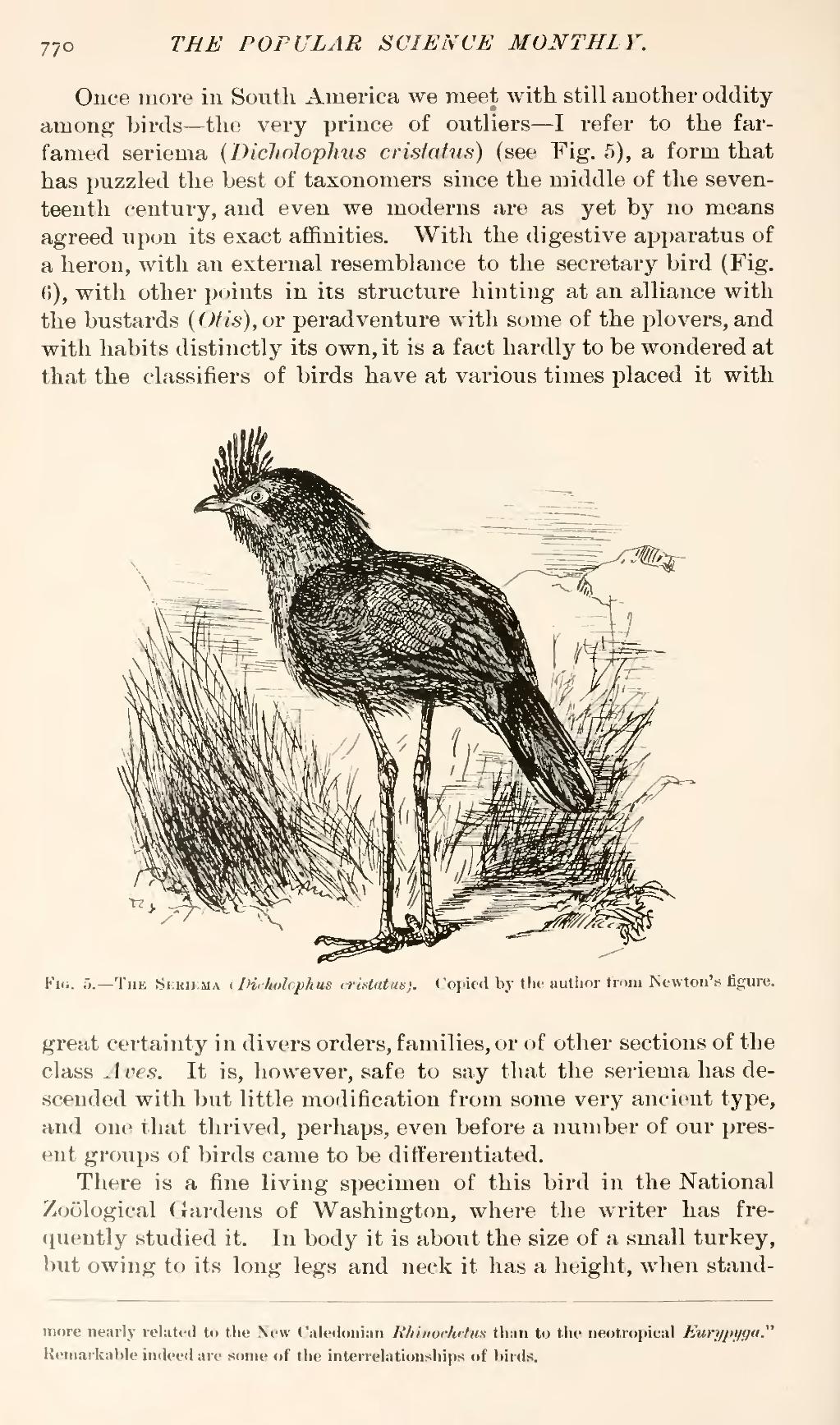Once more in South America we meet with still another oddity among birds—the very prince of outliers—I refer to the far-famed seriema (Dicholophus cristatus) (see Fig. 5), a form that has puzzled the best of taxonomers since the middle of the seventeenth century, and even we moderns are as yet by no means agreed upon its exact affinities. With the digestive apparatus of a heron, with an external resemblance to the secretary bird (Fig. 6), with other points in its structure hinting at an alliance with the bustards (Otis), or peradventure with some of the plovers, and with habits distinctly its own, it is a fact hardly to be wondered at that the classifiers of birds have at various times placed it with

Fig. 5.—The Seriema (Dicholophus cristatus). Copied by the author from Newton's figure.
great certainty in divers orders, families, or of other sections of the class Aves. It is, however, safe to say that the seriema has descended with but little modification from some very ancient type, and one that thrived, perhaps, even before a number of our present groups of birds came to be differentiated.
There is a fine living specimen of this bird in the National Zoölogical Gardens of Washington, where the writer has frequently studied it. In body it is about the size of a small turkey, but owing to its long legs and neck it has a height, when stand-
more nearly related to the New Caledonian Rhinochetus than to the neotropical Eurypyga." Remarkable indeed are some of the interrelationships of birds.
